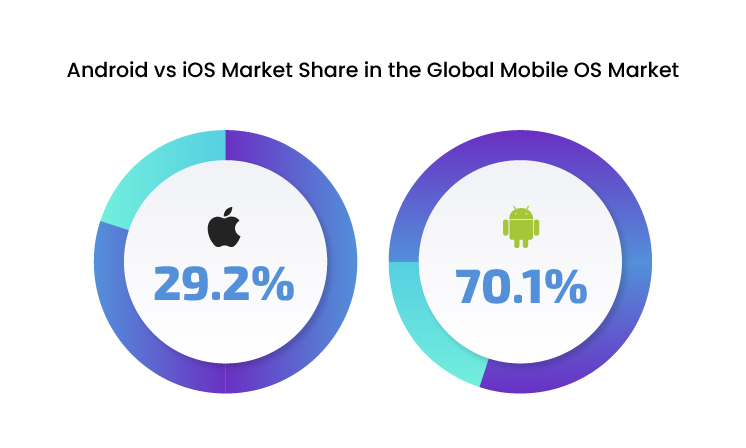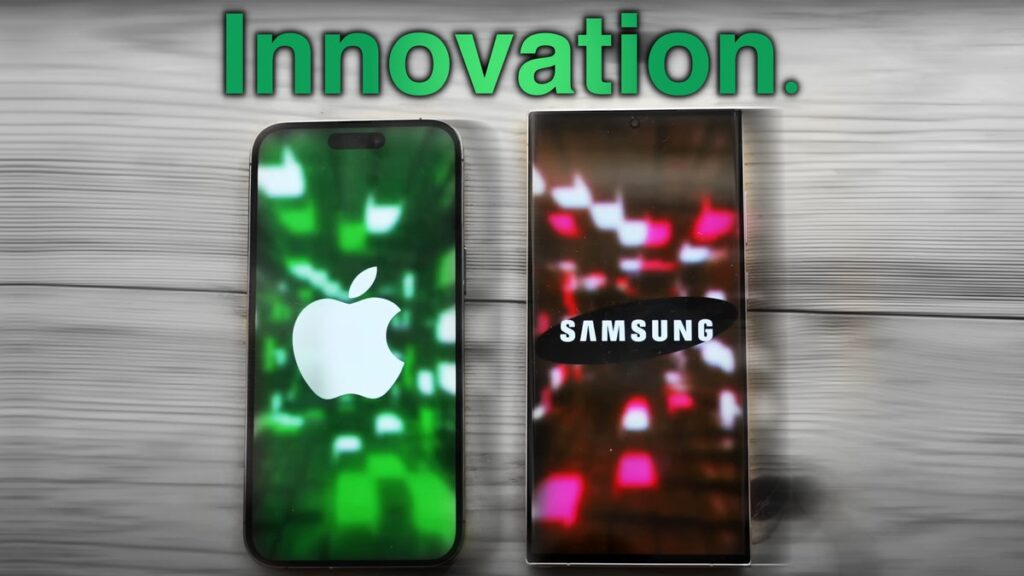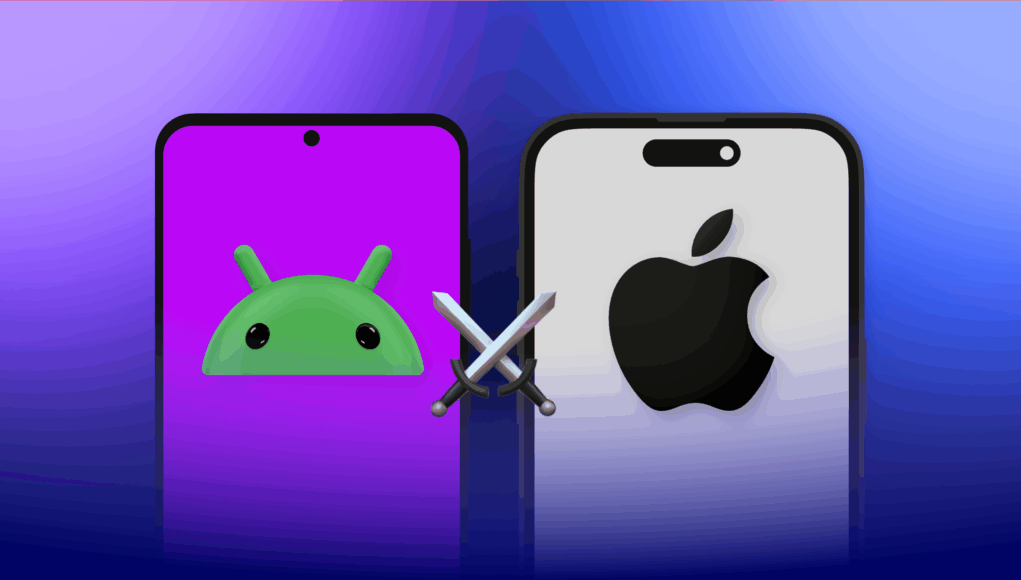As we move deeper into 2025, the rivalry between Apple and Android continues to shape the smartphone landscape. These two giants have dominated the market for over a decade, each with its unique philosophy, ecosystem, and user base. But with advancements in technology, shifting consumer expectations, and ever-evolving features, the question remains: Who’s winning in 2025?
To answer that, we’ll look at several factors—market share, innovation, operating systems, and brand loyalty—that determine which platform is leading the charge in the current landscape. Let’s explore the key points of the Apple vs. Android battle in 2025.
Market Share and Global Reach

Apple’s Steady Growth
Apple has traditionally been known for its premium approach, offering a closed ecosystem of tightly integrated devices and services. This philosophy has contributed to brand loyalty that continues to thrive, especially in developed markets like the United States and Europe. However, Apple’s global market share has historically been lower than Android’s, due to the more diverse price range of Android devices.
In 2025, Apple’s market share has remained relatively stable, holding about 20-25% of the global smartphone market. While Apple’s focus on premium pricing and high-quality hardware means it captures a significant chunk of the high-end market, the company has also expanded its reach with more affordable models like the iPhone SE and the rumored iPhone mini.
Android’s Dominance
Android, on the other hand, holds the largest share of the global smartphone market, encompassing 70-75% of devices worldwide. This is largely due to the sheer variety of Android phones available, from budget to flagship models. Android is also the primary platform for many emerging markets in Asia, Africa, and South America, where consumers are more price-sensitive.
With its open-source nature, Android allows a broad range of manufacturers—Samsung, Google, Xiaomi, OnePlus, and others—to create devices. This variety ensures Android remains the platform of choice for many consumers seeking affordable smartphones without compromising too much on quality.
In 2025, Android continues to benefit from its customization options and the diverse range of devices, which means it appeals to a broader audience. Price-conscious buyers and those who want flexibility in terms of hardware (e.g., foldable phones, gaming phones) often gravitate toward Android.
Innovation: The Edge in Technology

Apple’s Cutting-Edge Features
Apple is known for its focus on premium user experiences and is often at the forefront of introducing innovative features that become industry standards. In 2025, Apple continues to push the envelope with:
- Apple Vision Pro: The mixed-reality headset is expected to become a central part of Apple’s ecosystem, integrating seamlessly with the iPhone and Mac. This marks Apple’s first major leap into the AR/VR space.
- A17 Bionic Chip: Apple’s custom-designed chips continue to outperform many Android competitors in terms of processing power and efficiency. The A17 chip brings enhancements in AI, graphics, and gaming performance, ensuring the iPhone remains one of the most powerful devices on the market.
- iOS and Ecosystem Integration: Apple’s ability to integrate iOS with its other devices—Mac, iPad, Apple Watch, and Apple TV—creates a cohesive user experience that many users find hard to replicate in the Android ecosystem. Features like Handoff, AirDrop, and Universal Control make Apple devices more interconnected than ever.
Android’s Innovation Powerhouses
Android manufacturers have also made substantial strides in innovation, though the open-source nature of the platform means that innovation is often fragmented across different brands. Some of the key highlights in 2025 include:
- Foldable and Rollable Devices: Brands like Samsung and Xiaomi continue to push the boundaries of foldable technology with devices like the Samsung Galaxy Z Fold 6 and the Xiaomi Mix Fold 3. These devices are no longer just novelties but have become more functional and practical, with improved screens, durability, and features.
- AI and Machine Learning: Android is making significant strides in AI-driven features. Google’s Pixel 9 and other Android flagship devices are powered by Google Tensor chips, designed to enhance AI-based functions like real-time translation, advanced photography, and personalized experiences.
- Customization and Flexibility: Android still offers a level of customization that Apple simply cannot match. From changing default apps to tweaking widgets and themes, Android gives users a more personalized experience than iOS.
AI and Voice Assistants
In the AI and voice assistant space, Siri on Apple devices continues to evolve, but Google Assistant remains the most advanced and integrated voice assistant, especially in smart home environments. Google’s ability to pull from vast amounts of data and perform contextual understanding often gives it an edge over Apple’s Siri, which remains somewhat more limited in scope.
The Ecosystem and Brand Loyalty

Apple’s Strong Ecosystem
Apple’s greatest strength lies in its ecosystem. The interoperability of Apple devices and services ensures that once a user commits to the brand, they tend to stay within the ecosystem. The continuity of features across iPhone, iPad, Mac, Apple Watch, and Apple Services (iCloud, Apple Music, Apple TV+) ensures that users get a consistent experience across their devices.
Additionally, Apple’s privacy-first stance continues to resonate with consumers who are concerned about data security. With the introduction of App Tracking Transparency and robust privacy settings in iOS, Apple has carved out a niche as the platform that prioritizes user privacy and control over data.
Android’s Open Ecosystem and Flexibility
Android’s biggest selling point is the flexibility it offers users and manufacturers. Since Android is open-source, manufacturers can customize the OS to suit their hardware and specific user needs. This results in a diverse range of devices with varying specifications, features, and price points.
Android is also integrated across many types of hardware, from smartphones to smart TVs, wearables, and even home appliances. Google Services, such as Google Assistant, Google Photos, and Google Drive, offer a unified cloud-based experience that rivals Apple’s ecosystem in terms of utility.
However, one area where Android struggles is ecosystem integration. While Google has been working on improving interoperability, especially with Android Auto, Google Nest, and Wear OS, it’s still not as seamless as the Apple ecosystem. The experience can vary significantly between manufacturers, and customization options can sometimes lead to fragmentation in the Android world.
Conclusion: Who’s Winning in 2025?
As of 2025, both Apple and Android have their respective strengths, and it’s clear that the winner depends on what users prioritize.
- Apple continues to dominate in the premium market, offering seamless integration, innovative hardware, and a focus on privacy and security. Its closed ecosystem and high-quality devices appeal to those who value consistency, reliability, and a cohesive experience across all their devices.
- Android, with its massive global reach, is winning in terms of market share and affordability. It offers greater flexibility, more device choices, and cutting-edge features like foldable screens and AI advancements. Its diversity ensures that there’s an Android device for everyone, from budget buyers to power users.
In the end, Apple is the winner in terms of premium experiences, brand loyalty, and innovation, while Android maintains dominance in terms of global reach, diversity, and affordability. The competition between the two remains fierce, and users will continue to choose based on their personal preferences and needs.
Ultimately, the real winner is the consumer, as both platforms push each other to innovate and improve, providing more choice, better technology, and an ever-evolving mobile experience.




